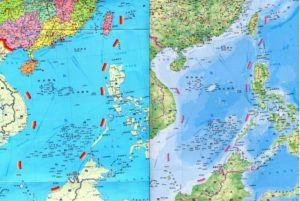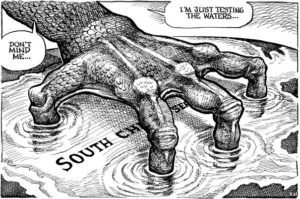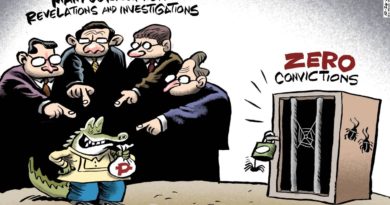OP ED EDITORIAL | Asean must show it’s no paper tiger (Asean is a Chinese Communist Flea)
OPINION-EDITORIA
Progress in drafting the code, however, has been glacial, with the two sides struggling to move past a nonbinding Declaration on the Conduct of Parties in the South China Sea (DOC) approved in 2002.
A breakthrough of sorts was announced in 2011, when a draft of the framework for implementing the code was adopted. But work on the draft has since been at a standstill.


Much hope is being pinned on the Code of Conduct as a mechanism for resolving disputes, but some political observers caution against such optimism. “Reaching agreements that are both effective and acceptable to all parties will require framing necessary compromises so that the South China Sea claimants can adjust their positions without violating domestic or international law,” the Center for Strategic and International Studies Expert Working Group noted in a study paper in 2018. “Finding those mutually agreeable compromises will be difficult but not impossible if all sides are committed to the project.”
The paper proposed, among other things, that the code include the establishment of a commission that will mediate disputes.

The commission will issue a decision outlining its conclusions and making its recommendations for a settlement between the parties.
While the Asean brings up the issue of a South China Sea Code of Conduct every time it calls a leaders’ summit, Beijing appears to be in no hurry to see it implemented, content with issuing platitudes that it is one with its neighbors in establishing peace and cooperation in the strategic sea lane.
Last year, Chinese Foreign Minister Wang Yi promised to step up consultations with the Asean on the code and “advocate true multilateralism and advanced open regionalism.”
That promise now rings hollow. Last week, China released a new map that further expands its territory in the South China Sea. The revised map includes a “10-dash line” that covers most of the West Philippine Sea and portions of Vietnam and Taiwan.
![]()

The map was released just days after Manila hosted a three-day discussion between China and the Asean on the Code of Conduct.
The talks were considered significant, having touched on key points, including whether the code will be legally binding, and its geographic extent.
During the meeting, the Philippines voiced its “displeasure” over China’s continued aggressive actions in the South China Sea, the latest being the water cannon attack by the Chinese coast guard on a boat on a mission to resupply Philippine troops stationed at the Ayungin Shoal.
Clearly, China has no intention of agreeing to a compromise when it comes to asserting its hegemony in the South China Sea. For one, it continues to ignore the 2016 arbitral ruling, which invalidated its historical claim over the South China Sea.

Establishing a code of conduct in the disputed sea has been complicated further by what China perceives to be the increasing intervention of Western powers in a purely regional issue. The United States’ commitment to help the Philippines strengthen its defensive posture and to defend Taiwan against an invasion from the mainland is seen by Beijing as an attempt to tilt the balance of power in the Asia-Pacific region.
The Department of Foreign Affairs has condemned the revised map as China’s latest attempt “to legitimize purported sovereignty and jurisdiction over Philippine features and maritime zones has no basis under international law, particularly the 1982 United Nations Convention on the Law of the Sea.”
The Asean summit in Jakarta this week will test the regional bloc’s resolve to convince China to agree to speed up the implementation of the Code of Conduct in the South China Sea.
It must prove once and for all that Asean is not a paper tiger that is subject to the whims of a superpower.











